I am having a back garden practice/recording cabin built. Structure will be (from outside to inside)
Concrete base with DPM
timber frame (total area 4x5m)
OSB with 18 mm shiplap cladding
4x2in wooden studs
100mm RW3
2 layers of 15mm acoustic plasterboard.
Roof
OSB covered with EPDM
I was quite concerned when I saw how the roof has been put up with roof joists on top of walls and a huge ventilation gap from one side of room to other(see pic).
the builder intends to put 2 layers of 15mm acoustic plasterboard (as on internal walls) attached from below to the roof joists with 75mm of rockwool above.
Builder emphasises the importance of ventilation to avoid condensation (which I get) but my concern is that all that is between the inside and outside is the 2x15mm plasterboard and 75mm Rockwool (with an air gap open to the eaves)
. I am unsure if this setup will compromise the already modest isolation.
Structure today is as it appears in pic but work is due to continue in a few days. have attached a rudimentary sketchup image of the design. a pic of the roof from inside and one of outside as it is today.
Questions
Is this an acoustic disaster?
Is there anything I can do at this stage to improve the outlook if it is that bad, preferably without ripping off the roof or anything that drastic?
I feel foolish not having focussed on these details prior to construction but feel now that I need to make urgent decisions to avoid having wasted money on materials while having a massive open gap to the outside, Any advice would be very much appreciated.
many thanks
Jose
Comments
Hi Brien, thanks for your quick response. Will make sure proper
Hi Brien,
thanks for your quick response.
Will make sure proper acoustic caulk is used, thanks for the advice.
was not planning to have wires through the celing for my mains sockets although for my track ceiling lights I guess they may have to come through that way.
I am maybe jumping the gun as have not discussed in detail with electrician what I need but have already talked about surface mounting the trunking so as to minimise holes in the walls.
was wondering if the pvc trunking can be fixed to the walls with the screws going throught the 2 layers of PB then into the RC making sure to avoid studs, this is in contrast to how he would do it if there were no need to minimise sound leakage. Doing it the normal domestic way he would just screw the trunking to a stud, am I right to think this is a No-No?
thank you
Jose
Brien Holcombe, post: 443629, member: 48996 wrote: Do not use si
Brien Holcombe, post: 443629, member: 48996 wrote: Do not use silicone caulk in any part of this build. It will transfer vibration, you should use either a quality acoustical caulk, or specifically if you have such a bad layout as to have wire coming thru your ceiling rather thru the wall framing where it should be, use a fire rated caulk.
How does (non-hardening) silicone caulking transmit vibration more than a quality acoustic caulk or butyl caulking?
Silicone is not non hardening. The difference is how one thinks
Silicone is not non hardening. The difference is how one thinks about the word hard. Where typical silicone enhanced or older caulks become actually rigidly hard silicone enhanced and or 100 percent silicone will become flexible dry and rigid not able to be considered as a viable replacement for caulks typically used in an acoustic environment.
Hi Brien and Kmetal, Thanks for the thoughts on silicone v acou
Hi Brien and Kmetal,
Thanks for the thoughts on silicone v acoustic caulk.
Have uploaded a pic of the beam, I asked about how to cover it in an earlier post. This runs full length from each narrower side to the other.
I will need to check with the builder as to its weight bearing ability but have been trying to plan my ceiling lights and also ceiling cloud. It occurred to me that providing it can take the load it could serve to attach cloud and lights to.
Do you have any thoughts on the viability of this idea?
I plan on boxing in the beam as discussed before.
Also any thoughts on attachment of the PVC trunking at skirting height to the PB/RCs would be a big help.
Another thing I am trying to get my head around is what would be the best way to bring the electrical cable to the ceiling lights whether fixed to the the PB or the Beam, completely surface mounted?
As always all your knowledgeable suggestions are much valued.
Manager thanks
Jose
Thanks for your response Brien, I already discussed ceiling tra
Thanks for your response Brien,
I already discussed ceiling track lighting with builder, this is no problem as far as taking the weight, was wondering if the ceiling cloud can be hung from the central beam alone or ideally should the weight be distributed between more hanging points. This would inevitably mean hanging from the PB (which will be fixed to RCs).
my other question was about bringing power to the ceiling lights, am thinking that surface mounting the cable is preferable to bringing it down through the PB on the ceiling.
I do realise how `semi pro` or non-pro my build must seem to you and other pro studio builders, my builder is very good and trustworthy but is not experienced in the specifics of studio building, I very clearly also have no experience in this but am learning so much from the advice I am receiving and reading in forum posts. My reality is that I am where I am and am attempting to learn as much as possible to be able to instruct the builder so I can end up with a space that I can work in comfortably. I kn0w I have failed in proper planning and it must seem like ` the blind leading the blind`with me and the builder but nonetheless I cannot go back now and start again. I am sure I will pay the price for my mistakes but as Keith Richard said when asked about how he feels about the exploitative nature of the music business "that's the price you pay for an education"! Just gotta do the best I can and take it on the chin!
many thanks Brien
Jose
Hi All, Does anyone have advice or thoughts on the following? T
Hi All,
Does anyone have advice or thoughts on the following?
The electrics are due to be installed. I have read advice that all cabling and sockets should be surface mounted and screwed into studs.
There will be a separate service panel with 3 circuits, , one for anything related or connected to audio and the other for lights, kettle etc. The electrician suggested 3rd circuit for high demand devices such as heaters, also they could be on a thermostat which could otherwise cause clicks and pops.
I was wondering how to attach the electrical trunking to the walls. I understood that this should be screwed into the studs (with caulking etc) as opposed to the PB (which is fixed to the RCs). I understood this to be best as plugs would be pulled and pushed into sockets and if attached only to PB it could eventually loosen or be pulled off the wall. Did I understand this correctly?
I thought screwing the trunking into studs would short circuit the benefits of the RCs as the screws would go through the PB then into the studs, is this the correct way of doing this? The advice I have read is that this is not a problem regarding flanking as the screw stays in the stud so ther is no hole.
On the same subject I am thinking along the same lines regarding attachment of the service panel itself, should this also be fixed to the studs through the PB? As this would be quite heavy this seems right but how do I avoid compromising acoustic isolation?
any advice is much appreciated,
many thanks
Jose
hello again folks, thanks everyone for past responses and sorry
hello again folks,
thanks everyone for past responses and sorry to have been off ther radar for some time. things have moved forward since my last post and I wonder if anyone can offer their thoughts on the following.
As things are at the moment I now have resilient channels up on walls and ceiling (have been careful to ensure properly installed). The walls have 2x15mm layers of acoustic plasterboard fixed to the RCs with 100mm Rockwool between studs, tomorrow the PB will go up on the RCs that are fixed to the ceiling.
apologies if this question has already been answered in other posts. regarding ceiling lighting can this be fixed directly to the plasterboard (being careful to avoid joists and using correct fixings) or should I ensure it is fixed with screws going through Plasterboard into to the RCs only?
If they must be fixed only to the RCs and there are no RCs in the location I want the lighting is it acceptable to add a length of RC where I want the lights to be fixed?
Any thoughts would be much appreciated as all previous ones are.
thank you
Jose
Hello again Brien, thanks for your quick response. As I have
Hello again Brien, thanks for your quick response.
As I have the central longditudinal beam under the ceiling joists and I would like ceiling lights symetrically spaced around it I thought
1) either 2 single spotlights either side of the beam above my desk and the same at the back of the room approx. above the sofa which will be against back wall (please see pic) . product something like this. http://www.screwfix.com/p/saxby-palermo-single-spotlight-satin-chrome-240v/9625j
or
2) a 2 light spotlight bar symetrically spaced either side of the beam in the same positions as outlined above, product something like this
http://www.screwfix.com/p/saxby-amalfi-2-light-spotlight-bar-chrome/6437j
In both scenarios I intend to space them far enough from the central beam to allow for a ceiling acoustic absorber or cloud to be placed above the listening position and one further back if needed. As I view the images of both these products it occurs to me that the 2 light spotlight bar option (2) would mean less penetrations of the PB which may make it preferable?
If I need more light I could even have another 4 lights (either 4 x single or 2 x double) similarly spaced around the beam and in between the front and back lights giving a total of 12 spotlights if needed. This may be overkill!
I have attached a very rough sketch of how I visualise option 1. unfortunately I am a beginner at Sketchup and am having difficulty sketching out option 2 , light positioning would be similar to option 1 but instead if 2 single spots either side in each position relative to central beam there would be a 2 light bar either side of the beam.
As the ceiling PB will be going up tomorrow my main question which impacts on choices tomorrow is whether lights need to be fixed to resilient channels (through PB) or can they be fixed to the plasterboard without the need to fix to RCs. Brien from you pic of toggle bolts this suggests to me that these would be all that is required and that I don't need to fix lights to RCs, is this right? that would mean light positioning is not dependant on there being a RC above the PB at that position, am I right to think this?
If fixing to RCs is required and there is not one in the selected position would it be acceptable to add a length of RC onto the joists where needed to fix lights below?
any advice is much appreciated. Thank you
Jose
That is correct...you would drill a hole in the pb and the toggl
That is correct...you would drill a hole in the pb and the toggle will expand once placed on the hole and rest on the pb.
Lights are not heavy that you are looking at so may want to consider using this type of screw in to mount them.

If you do use the toggle bolts...remember to caulk the penetration with acoustic caulk to maintain the integrity of the isolation .
Hi Brien, such a huge help to get your advice so promptly!. It
Hi Brien,
such a huge help to get your advice so promptly!. It also takes the pressure off as I can instruct the builder to put up the PB without having to add any lengths of RC to fix the lights to.
Another job that will be done tomorrow is dealing with that central beam. In an earlier post Brien you advised
`The beam is simply a beam. 1 layer of pb will do fine since you have the existing mass of the wood of the beam as a factor. You can tape and mud the out side corners of the beam just like it was a corner in your home.
The critical joints to treat as an acoustical connection will be where the ceiling meets the beam and where the beam meets the wall at either end. These should not make a hard connection`
. I am just double checking that I got it right as I will need to give the builder clear instructions. Sorry to repeat this issue but did I understand correctly
i.e to simply use acoustic calk where the the beam (and it's PB?) meets the ceiling PB? Is there any advantage to using 2 layers of PB around the beam?
many thanks Brien
Jose
Well the pb should be cut loose enough that you have a gap...no
Well the pb should be cut loose enough that you have a gap...no edges or sides of the wall should touch edges or sides of the ceiling...and no edges or sides of walls should touch edges or sides of other walls ..1/4 inch separation or gap is recommended.
Then you use backer rod to fill the void or space...and caulk over that.
As a rule....you run the entire first layering the room of sheetrock or pb...then install backer rod and caulk.
Then you run your next layer and do the same thing.
Also you want to stagger joints...at least 12 inches or so...do not layer joints on top of each other or you run the risk of having penetration that create leaks.
Does that answer your question Jose?
Wrap the beam with pb...nailing or screwing directly to the beam
Wrap the beam with pb...nailing or screwing directly to the beam.
Mass is what we are trying to develop to isolate sound and the beam has more mass already than 2 layers of pb.
It would take a lot of low frequency energy to vibrate the beam to a point that it interferred...and we couldn't hear that low anyway...lol
Hi All, back again! just had a chat with the electrician who wil
Hi All,
back again!
just had a chat with the electrician who will be fitting the PVC trunking in preparation for wiring up my one room music space.
There are resilient channels under the PB, they are spaced at 400mm from the floor. The lowest accesible RCs are at approx. 400mm from floor, is this a suitable height to have the trunking and therefore all my wall sockets at that height?
aesthetically I was imagining the trunking and sockets at a lower level, would that be better?
I instructed the electrician to fix the trunking (through the PB and avoiding the studs) only to the RCs which therefore dictates the trunking height. If there is no good reason to have it at that high would it be suitable to fix the trunking using something like this? or would a standard rawl plug (thats what we call it in UK) be OK.
If this is an option I would rather have the trunking set less obtrusively but will live with it if no better option.
Also as the width of the trunking is greater than that of the RCs, the upper trunking fixing can go into the RC but the lower one would have to somehow be fixed to the PB anyhow.
any thoughts are much valued, many thanks.
Jose
Please draw a diagram no matter how crude...of what it is you ar
Please draw a diagram no matter how crude...of what it is you are trying to explain. Construction is a diagram based business no matter how small the detail because interpretation is the monkey wrench that spoils the job.
That said...if you attach something to the interior membrane. ..like an electrical box...and that box makes a connection to the outside membrane you run the risk of short circuit in the anticipated isolation levels.
Hello Brien, thanks so much for your prompt reply and sorry no p
Hello Brien,
thanks so much for your prompt reply and sorry no pics on last post, was rushing and ran out of time to source and attach them.
here are a couple of pics of the RCs taken before the PB was fixed. Electrician says the floor level RCs are too low to fix trunking so that would leave the next one up which is approx. 400mm above floor level. Floor will be somewhat higher than in pics as there will be 50mm thermal insulation (Celotex) then boarding (not sure yet what thickness but probably something like 18mm) then underlay (approx 8mm) and finally laminate flooring ontop (approx 8mm).
My main question is whether fixing the trunking at the height of the next level of RCs (316mm i.e. 400mm minus thicknesses of floor layers described above) is an acceptable height or would it be an option to disregard the need to fixing trunking to RCs and fix trunking directly to PB alone at a lower level using some type of Rawl plug secure enough to hold the trunking, sockets and anything plugged into them while not compromising isolation?
The trunking is 100mm wide with screw holes close to each outer edge meaning that only the upper edge of the trunking can be fixed to the Rcs (which are 45mm wide) and the lower screw would need to be fixed to the PB alone , whether I fix trunking in this way or completely to the PB (at an alternative distance from floor) I will still need a suitable way to fix it to PB whether in part or entirely. Naturally my aim is to do this without compromising any isolation achieved.
Initially I had visualised the trunking being perhaps a few inches off the floor (as on a typical domestic skirting board) but if there are major drawbacks to that or major advantages to fixing trunking at the final height of approx 316mm or even the next RC level above (approx 716mm) then I would go for whatever is best from a practical/functional perspective.
Hope my enquiry is clear.
On a side note I had to be very emphatic with the electrician that I did NOT want anything fixed to the studs! As he is not specialised in studio wiring his tendency is to do things the way he always does it in standard domestic installations, I explained that if he did this I would have wasted hundreds of pounds on the RCs and labour costs and fallen at the final fence!
many thanks
Jose
Jose
Attached files 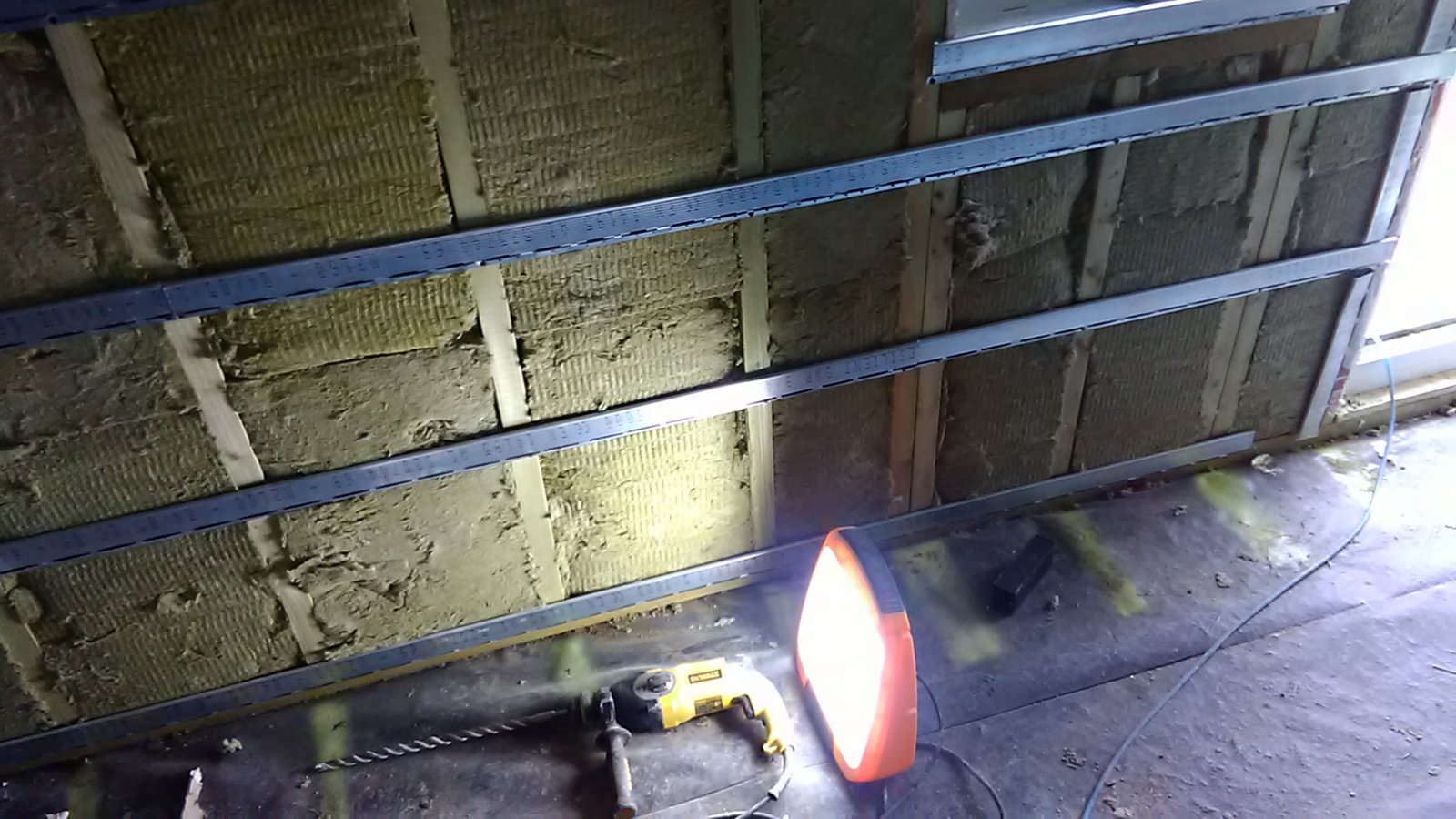
 resbardatasheet.pdf (142 KB)
resbardatasheet.pdf (142 KB)
The problem with what you are doing is that it is a direct resul
The problem with what you are doing is that it is a direct result of no planning.. what you are asking is can I do something, that should not be in this part of the build to begin with.
Again, any connection you make on the interior of the mass air mass system with electrical will potentially short circuit the isolation...plane and simple. If it is 2 feet high or 10 feet high...doesn't matter. Without diagrams I can no more speak to this trunking question then can anyone else. All I can say is that we need diagrams...detailed drawings that explain what you are doing, what you are putting up, how many and what will be the place meant of plugins, etc.
Connect directly to the interior sheathing at this point, do not cut holes in the interior sheathing...I repeat, do not cut holes.
Hello Brien and thanks again for your advice. of course you are
Hello Brien and thanks again for your advice. of course you are right, I am asking questions that at this stage I should not be asking. I understand my failings and poor planning.
My whole purpose of surface mounting all the electrics by using trunking is to avoid making holes in the interior sheathing, I had understood (perhaps mistakenly) that by installing all cabling and sockets vis surface mounted trunking I would avoid unneccesary punctures. As the trunking iteself still needs to be fixed to PB in some way I understood that the right way is to fix it not to the studs but to the RCs that lie below the PB as simply glueing trunking holding sockets etc would be inadequare. There may be a better way to do this which I am unaware of.
I understand your unwillingness to comment further without clearer drawings, I will do some clearer drawings as the pics seem to not be adequate to describe the scenario.
Will get back with them asap.
kind regards
Jose
OK Brien, thank you , that makes sense. I may have overdetailed
OK Brien, thank you , that makes sense.
I may have overdetailed my initial question as the essence of the query is, what is the best way to fix PVC trunking to PB?
It obviously needs to be screwed in so is there a specific type of fixing or Rawl Plug (UK term) to use?
If trunking can be fixed securely directly to the PB that bypasses my questions about distance from floor as it can be fitted wherever I want,
was just concerned that fixing to PB alone would wear and work loose in time.
all the best
Jose
Ok Brien, I understand, I will have to find out the info needed.
Ok Brien, I understand, I will have to find out the info needed.
The trunking itself has been delivered (by electrician) but I don't know it's weight or the additional weight of the sockets that will be fitted to it, am currently assesing total number of outlets needed on each wall, obviously weight and pull will be increased when there are things plugged into those sockets too.
I will source and provide further info, pics and sketches asap.
thanks again
Jose
One thing I learned over the course of a few projects where a bu
One thing I learned over the course of a few projects where a builder was involved is that their construction methods and shortcuts work against you. simple things like poor cutting of plasterboard at corners, leaving air gaps you can't see, and their willingness to puncture perfectly sound sealed rooms to add in afterthoughts. They also use fixing that over time start to creak and do not understand anything other than general building techniques. Most of my early problems were from allowing builders to produce a wonderful cosmetic job, with awful adherence to the plans where they couldn't be seen.
Hi Paulears, thanks for your response, You are right and I am f
Hi Paulears,
thanks for your response, You are right and I am finding that out the hard way! At the same time I can't blame anyone but myself as it is my responsability to understand what's needed, plan and supervise dilligently!
At the moment I am having the electrics fitted (surface mounted trunking) and it is like pulling teeth to get electrician to deviate from his standard methods!
further to my post yesterday which Brien kindly advised me on I have done a hand sketch of the issue regarding fixing PVC trunking to walls. have also attached a pic of the trunking casing which is to be fixed to the wall. Once the cables/sockets are aligned then the `lid`is closed on the trunking.
my question yesterday was how to fix to lower screw of the trunking case to the PB bearing in mind there is no RC below to fix it to. I hope the drawing helps clarify this.
Brien I havent yet been able to ascertain the weight of the trunking and sockets, I think the RCs can hold the weight as it can take the PB weight and more but as the bottom screw won't be going through to any RC underneath the question is how to securely fix the bottom screw without compromising isolation.
any thoughts very welcome.
thanks
Jose
hello again looking again at my own sketch I had a thought whic
hello again
looking again at my own sketch I had a thought which might sound amateurish but will put it out there to get your thoughts.
as the RC is 45mm wide and the trunking case is 100mm wide, is it a totally useless idea to screw both trunking screws into the RC as far apart as acceptable and also glue the trunking to the wall using a product like `No More Nails`? that way no screws have gone straight into PB alone and the trunking has the extra bonding of the glue.
Totally rubbish idea or any sense in it?
cheers
jose
I believe I mentioned that you want to attache to the face of th
I believe I mentioned that you want to attache to the face of the pb...not the rc.
The resilient channel has one job and one job only and that is to decouple the membrane from the hard framing.
You do not want to attache to the rc....I also presented a picture of a toggle bolt earlier that should help to fasten the trunk to the pb.
Thank you Brien for your reply, yes you did explain about toggle
Thank you Brien for your reply, yes you did explain about toggle bolts and also send a pic. Did not mean to disregard your earlier advice. I guess mistakenly thought they are ideal for hanging heavy things like ceiling clouds etc but it did not occur to me to use to fix trunking to PB.
This is a huge help in several ways , 1) I can fix trunking correctly to PB and 2) the position (distance from floor) of the trunking is not determined by there being a RC behind PB to fix it to. That means I can have the trunking at my preferred lower level.
What I need to do now is source the correct size toggle bolts to attach the trunking to PB. I am away from the cabin right now but know that the trunking casing is only a few mm thick but as there will be the additional weight of the cabling, sockets and plugs I will need to ensure I pick an appropriate size.
Out of the 2 suggestions you offered in your earlier post (pics re-attached), in your opinion is there one of them that is preferable for this purpose or are they equally good?
As always I am full of gratitude to you Brien!
Jose
This is the type I would use it is similier to the mushroom head
This is the type I would use it is similier to the mushroom head type but will hold more and will tighten more securely.
Not sure if anyone else mentioned it - but OSB is amazingly ligh
Not sure if anyone else mentioned it - but OSB is amazingly light, easy to cut, and easy to drive fixing into - and not something I've ever used in my projects? In terms of density and suitability for sound control purposes, it's not very useful stuff - but again, builders love it. Ply and MDF are structurally useful, but of course are more expensive and much more heavy. In terms of providing a barrier to sound, plasterboard in sufficient depth works well, but in my projects where there will be lots if perhaps careless use - colleges, rehearsal spaces etc, I've found that adding a layer of MDF works pretty well. It's never in the books, but the advantage is that as a layer, you can screw into it, anywhere and it's structurally sound. I've even used it as the interior layer on a couple, where resilience to students crashing amps and chairs into into it was crucial. It's more reflective than plasterboard, but not much as long as you are also doing sound treatment too, and the results have been pretty good for me. My favourite trick is to use the plasterboard vertically as usual, but run the MDF panels in horizontally, and then cover the join with a timber strip - 100 x 17mm PSE, or more nice timber if budget allows, with routed over corners to remove the sharp edges. I then add another run parallel and a little lower so that the standard UK power sockets, light switches and XLR panels can go between the strips. It looks nice, and is a simple way of finishing the interior - the timber strips secured with screws in cup washers at equal distances. MDF takes paint extremely well and is very tough compared to plasterboard which can be ripped and dented very easily and looks tatty. The density of the MDF helps reduce sound transmission and you can screw shelving to it for things like keyboards, and guitar hangers - anywhere! I read that MDF wasn't suitable for this type of use, but my experience is that it works reliably and predictably. There is some outgassing from the formaldehyde used in it's manufacture for a while, but after painting, this soon clears. If you use 18mm sheets, then the material is tough enough to not bend when only fixed top and bottom edges (to hide screw holes - but if you have to use 9mm, some construction adhesive on the plasterboard surface prevents it bowing in use.
It is no secret that Rod Gervais has used OSB in his builds as
It is no secret that Rod Gervais has used OSB in his builds as far as 10 years ago where I picked it up and have also recommended it....depending on the build.
A typical use would be developing an interior free standing room inside of a room where the OSB provides the structural integrity and shear needed so as to eliminate decoupling or seismic hardware often required otherwise.
I would also never ever recommend the placement of a fiber type product such as MDF to be installed in the cavity of a mass air mass system. Reason being is that the MDF product will deteriorate under high humidity and as moisture attempts to migrate from the warm to the cold side of the .encapsulated space.
But, as a useful backing for the ability to hang items anywhere and also have a slick finish that is paintable...it could be useful on the interior side of the room I agree.
Hi Paulears. Thanks for your suggestions. My build is now beyon
Hi Paulears.
Thanks for your suggestions. My build is now beyond that stage unfortunately but if I had done things the way you suggest I would not be facing the issues I am now.
I read a post by Stuart (soundman2020) on John Sayer's forum that he does something similar giving the option of screwing things like shelving anywhere.
I got some good advice on this forum yesterday from Brien about using toggle bolts to fix the electrical trunking to walls, I still have lights and sound treatment to put up but thanks to good advice received I know how to do it. Also will need to prise the electrician off his 'one way track' and instruct him to use the toggle bolts.
Another issue which you mentioned in a previous post about contractor's wanton damage to isolation (through ignorance not malice) could be minimised by having easier surfaces to screw to..
Like so many before me I am painfully aware of my failings in planning despite my best efforts. If I ever build another music room I have a better idea how to approach it! Saying that even though mine is not finished yet with much left to do I think it will be good for my needs (no live drums, working alone) so I remain really excited anticipating a better workforce with less domestic interruptions.
Thanks to Paulears, Brien, K metal and all you helpful folks!
José
Hi Brien, I am very new to building this kind of structure and
Hi Brien,
I am very new to building this kind of structure and also to the forums, I am benefiting so much from all the wisdom available and am finding out some great and useful strategies. I have great respect for all who are kindly helping and advising me.
Being a total newbie I read a great idea and have no idea how long it has been around or who came up with it first. Respect to whoever devizes these clever strategies and thanks to whoever passes them on!
All the very best
José
A lot of what becomes standard was either developed simply from
A lot of what becomes standard was either developed simply from need or has just been handed down over the years.
Philip Newell author of "Recording Studio Design" used a lot if techniques decades ago that while they did work, data suggests there are better ways to achieve certain things. Like the use of what is called homosote as a dampening sheating. It isn't the best way to go but the use has been spread like fire on the Internet to the point that you cannot hardly make it go away.
It isn't a bad thing...there are just better designs that cost less and require less man hours.
My concern is always that. Less material cost and less man hours and the best bang for the buck...no matter who came up with the idea. :)


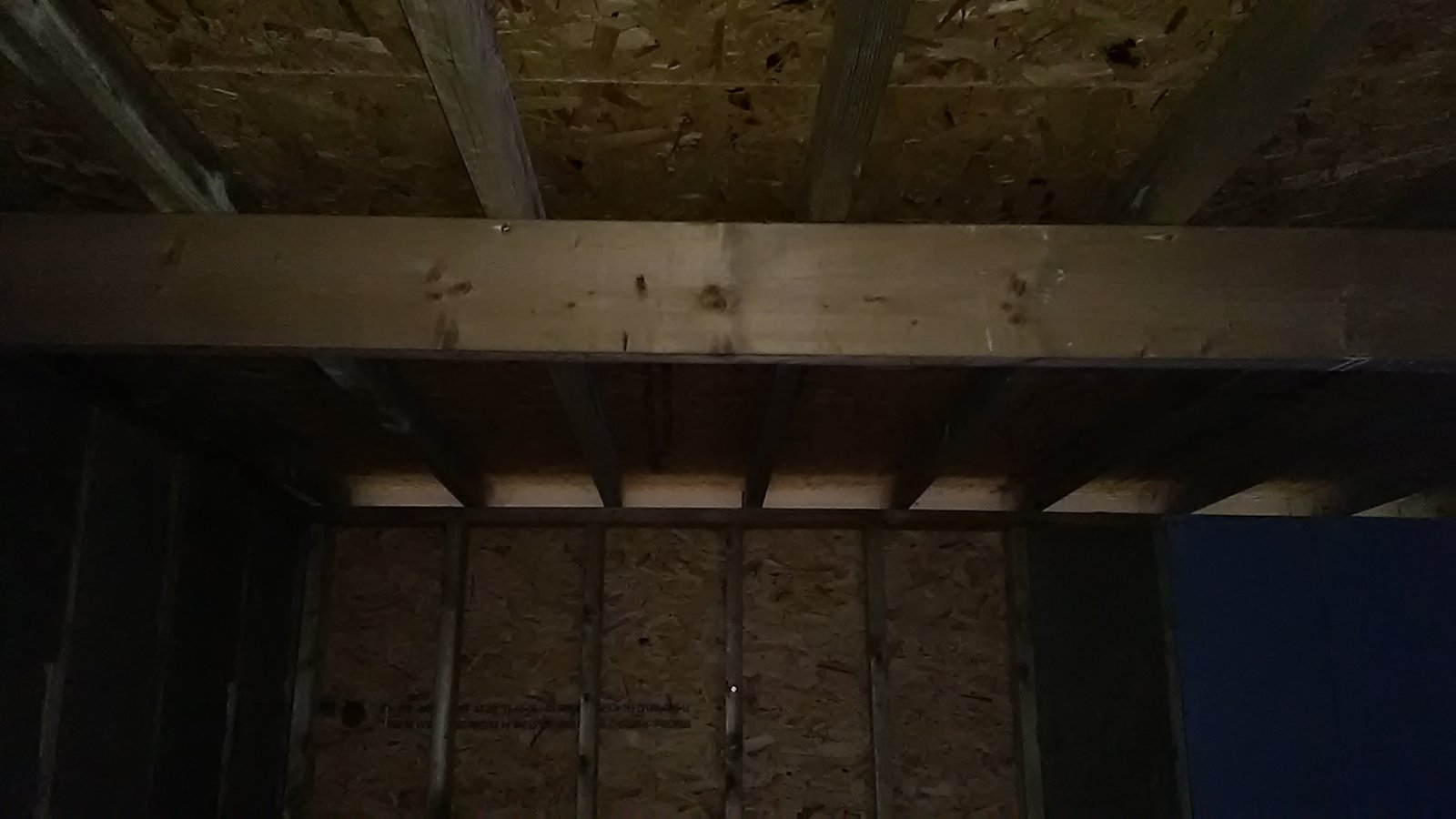
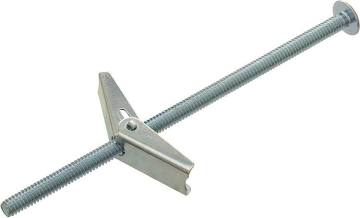
.jpg)
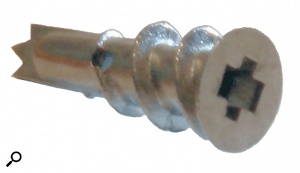
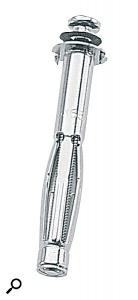


 1.jpg)
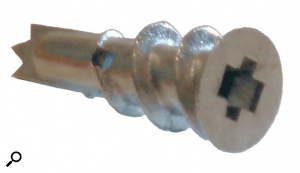
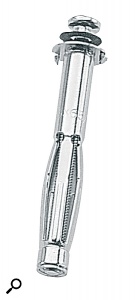
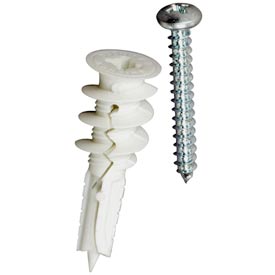
Do not use silicone caulk in any part of this build. It will tra
Do not use silicone caulk in any part of this build. It will transfer vibration, you should use either a quality acoustical caulk, or specifically if you have such a bad layout as to have wire coming thru your ceiling rather thru the wall framing where it should be, use a fire rated caulk.